As an Amazon Associate, I earn from qualifying purchases.
Today we are talking about all things whole wheat! From grinding your own flour, tips for creating light and airy baked goods, and of course my favorite whole wheat recipes.
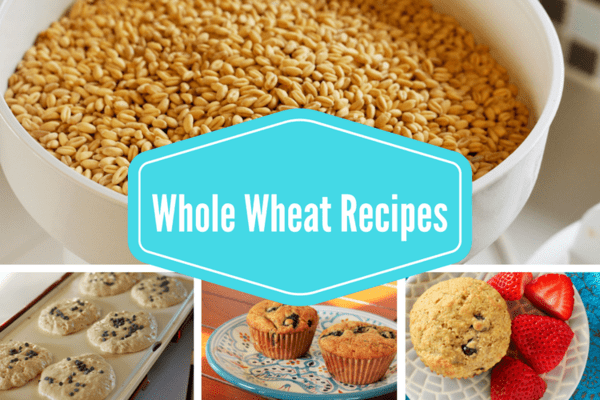
Back in 2012, when I realized how expensive flour was versus the cost of a grain mill, I decided to start saving for one. I saved, and saved, and saved, and was still probably about four months away from even thinking of being able to purchase one. Then, a random enormous Amazon box showed up one day, and you can imagine my surprise to find the grain mill of my dreams with a note that said “happy birthday AND Merry Christmas, love Anne”. Before you ask, Anne is not accepting applications for new friends.
For the last five years, I have been a proud owner of a Wondermill, but there are many options available. I know Kitchen Aid makes one that attaches to your mixer, but I feared that it would wear out my motor. Whatever your machine, they all essentially do the same thing – turn wheat berries in to flour. It can work with other grains too of course (corn, etc.), but mine has only been used as a basic flour mill.
Wheat berries that I purchase from Azure Standard are soft white, and hard white (which Troy tries to convince me was his nickname in high school. Not buying it.). Soft white is best used for baked goods like cakes, biscuits, cookies, pancakes, etc. I also use it for whole wheat pizza dough. Hard white is only used in our house for homemade bread.
The cost of wheat berries has doubled in the five years since I have been grinding wheat for whole wheat recipes. Soft white wheat berries on Azure are currently $45 for 50 pounds, and hard white/red runs about $43 for 50 pounds. Good thing I have approximately 4 billions pounds of it in my zombie pantry. I store my wheat berries in five gallon food safe buckets with Gamma seal lids, which keep the berries in an air and water-tight environment.
Organic whole wheat flour at the grocery store will run you $5-10 for five pounds. The general rule of thumb is that one cup of wheat berries is equal to about 1.5 cups of flour when ground. These mills are pricey, but if you bake like I bake, the “break-even” point is fairly soon. It’s actually immediate if your friend buys it for you. Ha!
In addition to the mill being cost-effective (eventually), there is also the flavor and nutritional factors to consider. Freshly ground flour is far superior in taste to store-bought. It has an almost “nutty” taste to it, and anything made with whole wheat flour keeps you fuller longer than items made from white flour. Additionally, there is convenience in that I never run out of flour in the middle of a baking project. Sure, I may need to grind some, but I’m not rushing to the store to track down whole wheat flour while trying to make pancakes.
The oils in wheat start to turn rancid quickly after grinding. So, the flour that is purchased from the store often has to be treated or processed to make it shelf-stable. For the purpose of disclosure, I still buy King Arthur bread flour from time to time, as I put 1 cup in each loaf of homemade bread that I make. I store big containers of the freshly ground flour in the freezer; it stays soft and fluffy and keeps the oils from getting icky. And I’m am able to grind less often. Unlike my teeth, which I grind every night. 🙁
The secret to making whole wheat baked goods that are as fluffy as white flour items, is a magical ingredient called vital wheat gluten. As the name implies…it is vital. 🙂 Simply add 1 tbsp of vital wheat gluten per 1 cup of whole wheat flour to any whole wheat recipes, and you’ll have improved results.
Now, if you’re not ready to invest in a grain mill, or simply have zero interest in ever grinding your own wheat, there are loads of great whole wheat flours available for purchase. If you’re looking to make pastries, cookies, or muffins, you’ll want to purchase “pastry whole wheat flour”. For breads, you’d want to buy regular whole wheat flour.
Let’s take a tour of the Wondermill
Here is the base of the grinder: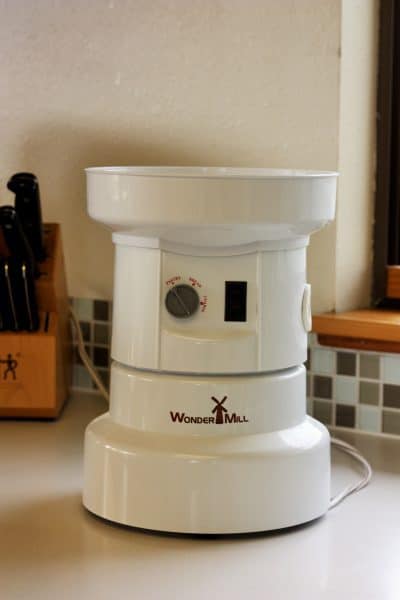 The lid of the grinder goes on the flour bucket. Flour bucket is not the technical term. This isn’t food mill porn (well it kinda is). The gray hose goes in the hole. It’s a tight fit. That’s what she said.
The lid of the grinder goes on the flour bucket. Flour bucket is not the technical term. This isn’t food mill porn (well it kinda is). The gray hose goes in the hole. It’s a tight fit. That’s what she said.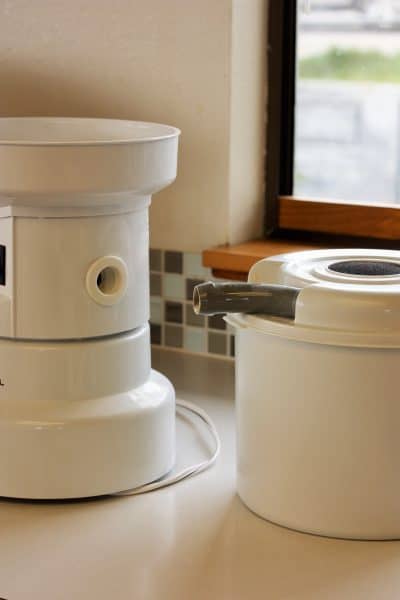 Lest you forget, you need to turn on the mill before adding the grain. That’s what she said.
Lest you forget, you need to turn on the mill before adding the grain. That’s what she said.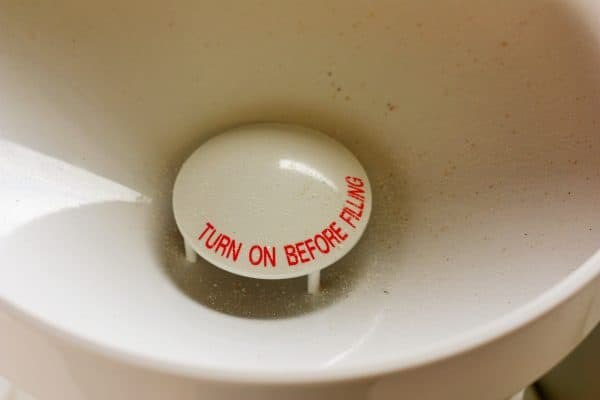 I always grind everything on the “pastry” setting for a finer flour. Hit “on”, and let it go for a few minutes, and voila, flour.
I always grind everything on the “pastry” setting for a finer flour. Hit “on”, and let it go for a few minutes, and voila, flour.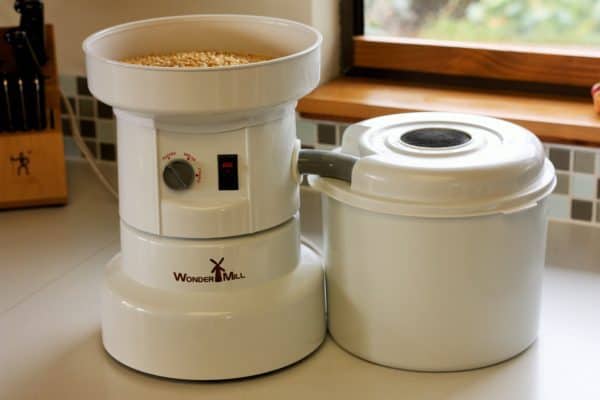
- Whole Wheat Banana Chocolate Chip Muffins
- Whole Wheat Blueberry Muffins
- Whole Wheat Orange and Chocolate Madeline Cookies
- Whole Wheat Pancakes (blueberry options)
- Whole Wheat Red Lobster Cheddar Bay Biscuits
- Whole Wheat Sandwich Bread
- Whole Wheat Waffles
If you’re thinking of adding a grain mill to your kitchen, I’d highly recommend it! It allows for versatility in cooking so many whole wheat recipes, and delicious meals. I’m happy to answer any questions you might have about the ins and outs.
That’s what she said.

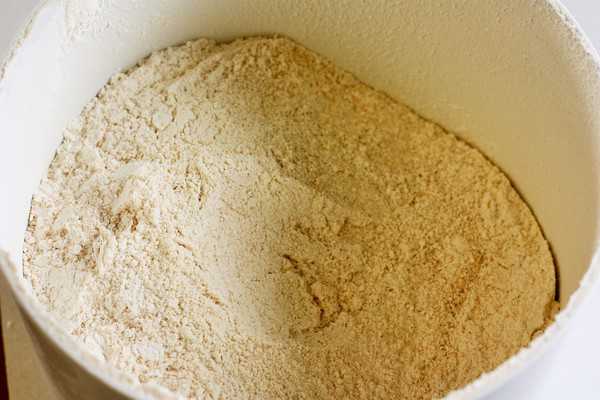






Do you sift the bran off of your ground flour prior to using?
I never have, but you absolutely could!
We would like a good biscuit recipe to get started and then move on to better foods.
I’m using the dry container of my Vitamix. They have a recipe to make a loaf of bread directly from the wheat berries, but I came to this post for equivalent to grind only 3 cups of flour from wheat berries which would be 2, according to you. I need this for a muffin recipe. I decided to buy wheat berries to avoid having those big 5 lb bags and just grind what I need fresh for each recipe.
I’m so intrigued by using a Vitamix to grind wheat! Can’t wait to hear about your results.
Hi, if you happen to see this I’m curious how it went with the Vitamix cuz I just bought 1 with the dry container and was going to grind wheat berries!
Where could I buy unground whole wheat flour near Oakville Ontario Canada
I really don’t know enough about that part of the world to offer solid advice. I would say contact a food co-op if you have one locally. Do you have Whole Foods? They should sell wheat berries in bulk but the price would be prohibitive for grinding a lot. But you could check the brand they sell in the store and then contact that company.
Additionally, farmer’s markets are amazing sources for local information. If someone there isn’t selling it (I’ve honestly never seen it at any farmer’s market around here) they may know someone who is. Does your city or town have a facebook page? I would also post something on there asking for recommendations.
You say, ” the flour that is purchased from the store has to be treated or processed to make it shelf-stable.” That’s not the case. Spokespeople from both King Arthur and Bob’s Red Mill assured me that all the germ is included in their whole grain flours. In addition, their products stay free of rancidity on store shelves many months without the use of preservatives.
They may leave the bran, but they strip the oils (that’s what goes rancid). That’s why store bought whole wheat flour is drier than fresh milled flour too.
Hi I just found your blog tonight and found it very interesting! I do have a couple of questions about wheatberrys and storage of them. I bought probabely 150 # of hard red wheatberrys off ebay for almost nothing and now I really don’t know what to do with them. They arrived in plastic bags inside the box. Do they need cleaned before grinding or storing long term? If so how? Is it better to just store the berrys or grind and store the flour? Thanks for any input you can offer. love your blog!! Rebecca
No need to clean them ahead of time! I store mine in food safe 5 gallon buckets with Gamma lids (you can find them on Amazon. They’re kinda spendy, but will last a lifetime and protect your food from flooding and pests.
Great Blog!!
Have you considered using a sourdough start? A friend gave me some of her start and my bread is now even cheaper and so healthy just flour, water, and salt. I think I am at about $ .15 a loaf. It depends on how much I pay for the wheat berries.
I live near St Louis MO. and I have gotten wheat berries from the LDS Bishops Store house, but you have to get it in cans, what a pane. The last wheat berries I bought were form the Amish in Arcola IL. I got a 50# bag for $29.00. I use hard red wheat for bread since it has higher protein content. So glad I found you I love to talk shop.
I’ve considered sourdough at some point, but am not ready to rip that band aid off quite yet!